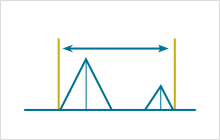Cardiac Filling MasterClass
Diastolic Dysfunction - Cardiac Filling MasterClass

What you will learn
The assessment of diastolic function is part of each and every echo exam. Diastolic dysfunction is an important cause of dyspnea and can be present in patients with and without overt impairment of systolic left ventricular function (heart failure with preserved ejection fraction - HFpEF). This chapter provides you with a detailed description of how to perform an analysis of diastolic function with echo. What is diastolic dysfunction and what is the physiology behind it? How does it relate to filling pressures? Which parameters do we have at hand? And how should we integrate the newest guidelines into clinical practice? Using proven educational methods we break the topic down, separate the important from the trivial, and provide you with a simple approach to diastolic function.
Video lectures
-
 Introduction
Introduction
In this short introduction, Prof. Thomas Binder will briefly outline what diastolic dysfunction is all about and why we decided to create a specific chapter for this condition. We will discuss the causes and symptoms of diastolic heart failure and set the stage for the rest of this chapter.
This video lecture is only available for subscribers!
Get the Cardiac Filling MasterClass -
 Pathology and Physiology
Pathology and Physiology
In this lecture, Prof. Thomas Binder and Dr. Martin Genger discuss the underlying physiology of the left atrium and the pathophysiology of some filling abnormalities. Watch this lecture to learn about the role of diastole as part of the cardiac cycle and how the E- and the A wave can help you to understand filling gradients and the stiffness of the heart.
This video lecture is only available for subscribers!
Get the Cardiac Filling MasterClass -
 Parameters
Parameters
In this lecture you will learn about all the different parameters that can be assessed for diastole. We discuss what the E and the A wave are, what velocities to look at, how to use tissue doppler and in which way you can assess the pulmonary venous flow.
This video lecture is only available for subscribers!
Get the Cardiac Filling MasterClass -
 The guidelines
The guidelines
This lecture is all about breaking down the guidelines into a useable format. We present you with flowcharts and best practices that you can follow to quickly and easily assess the diastolic function of your patients, allowing you to gain confidence in your decision. You will see some cases that use this approach, and learn in which scenarios it is simply not possible to assess diastolic dysfunction.
This video lecture is only available for subscribers!
Get the Cardiac Filling MasterClass -
 A simple approach
A simple approach
In this special lecture, we will finally teach you a simple approach to diastolic dysfunction. After learning about all the different parameters and views you can finally use them to assess your patients.. Our experts break it all down to four easy to remember rules for you to follow. This will save you lots of time and provide you with the information you need to diagnose and treat your patients..
This video lecture is only available for subscribers!
Get the Cardiac Filling MasterClass -
 Specific situations
Specific situations
In this lecture Prof. Thomas Binder will go through some commonly found scenarios in which assessing diastolic dysfunction will is more difficult. You will hear about variations of the waves during respiration, atrial fibrillation, impairment of atrial function and what changes when the patient is on a ventilator.
This video lecture is only available for subscribers!
Get the Cardiac Filling MasterClass